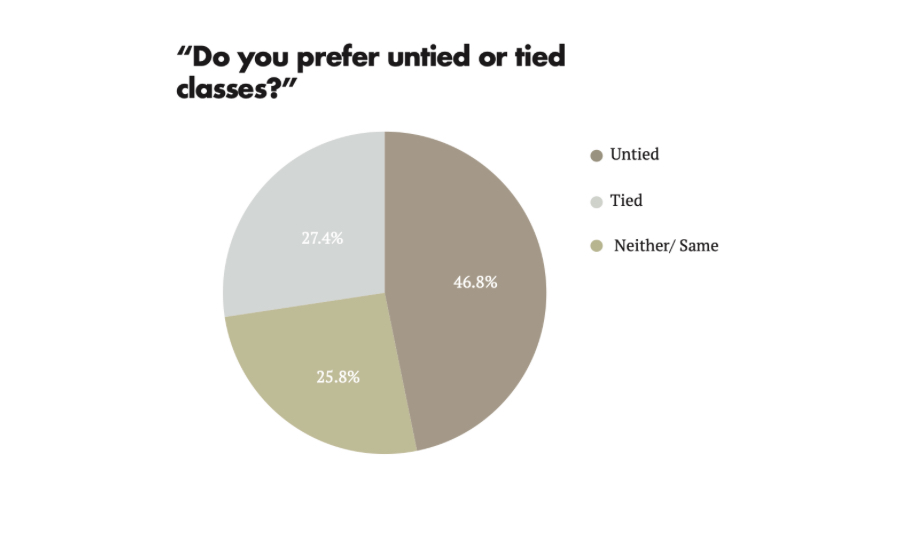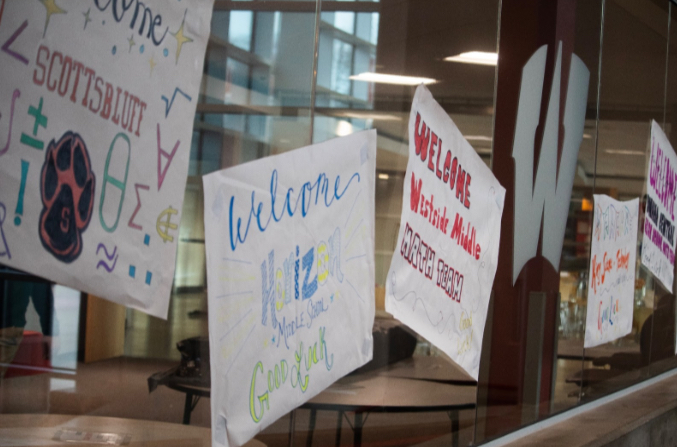Throughout all of the different classes offered here at Westside, they are grouped and scheduled in many different ways. Tied classes keep the same groups of students together every day. Untied mix up everyone in the class holding different groups each day.
For students and teachers, there are pros and cons to both. Classes get switched between both throughout the years and even at semester. Charlotte Weyler is a teacher in the English department and had her classes switch to united this semester.
“It makes me respect other preps here at Westside that have always had untied sections; it is relatively new to us in English,” Weyler said. “The biggest pro seems to be the flexibility in the students’ schedules when I feel the learning environment should be a heavier factor in the equation.”
A mid-year switch is somewhat abrupt to the current curriculum, schoolwork and teachers plans for the semester. Having an untied class creates some difficulties for group led assignments.
“Students gain a lot from being able to work together in groups on different activities, and having untied sections this semester forces us to restructure units in a disjointed manner to allow for those activities to happen,” Weyler said.
Both options come with their pros and cons. Each can work well for certain classes and not with others. Classes requiring lots of group or lab-type work may be beneficial for a tied grouping for example.
“It takes longer to get to know the students since there are almost thirty seating charts to work from. Facilitating and releasing timely information to individual classes on Classroom is also a logistical challenge without them being tied,” Weyler said.
For students it also adds a bit of a change. Having the same group of people to work with can be fun and convenient with friends. On the other hand, a mix every day gives more opportunities to be with a lot of different people. On the other hand, students like Junior Laurel Deegan believe a mix every day gives more opportunities.
“It gives you more opportunity to fit classes you want into your schedule and it is the base of modular scheduling, tied classes should only be for really important classes where you need the same people in every class,” Deegan said. “I have had more cross-sections because of tied classes.”
Modular scheduling allows for a lot of flexibility within schedules, which tied classes can somewhat limit. It all depends on the give and take of each class and what allows for the most success. While there differences are apparent, for some both are equally good methods. In some ways, like for freshman Timothy Ricks, there are other benefits in a class that are more important.
“I feel the most productive in classes orchestra, CS principles, and my other electives, which are a variety of different schedule arrangements, not majority being one or the other,” Ricks said. “I don’t care who I learn with, to me it is just the content of the class that matters.”
In conclusion teachers, students and the curriculum must be taken into consideration when switching between untied and tied classes. They both have their strengths and weaknesses.
“My class switch makes me respect other preps here at Westside that have always had untied sections,” Weyler said. “It is relatively new to us in English, but the biggest pro seems to be the flexibility in the students’ schedules when I feel the learning environment should be a heavier factor in the equation.”














